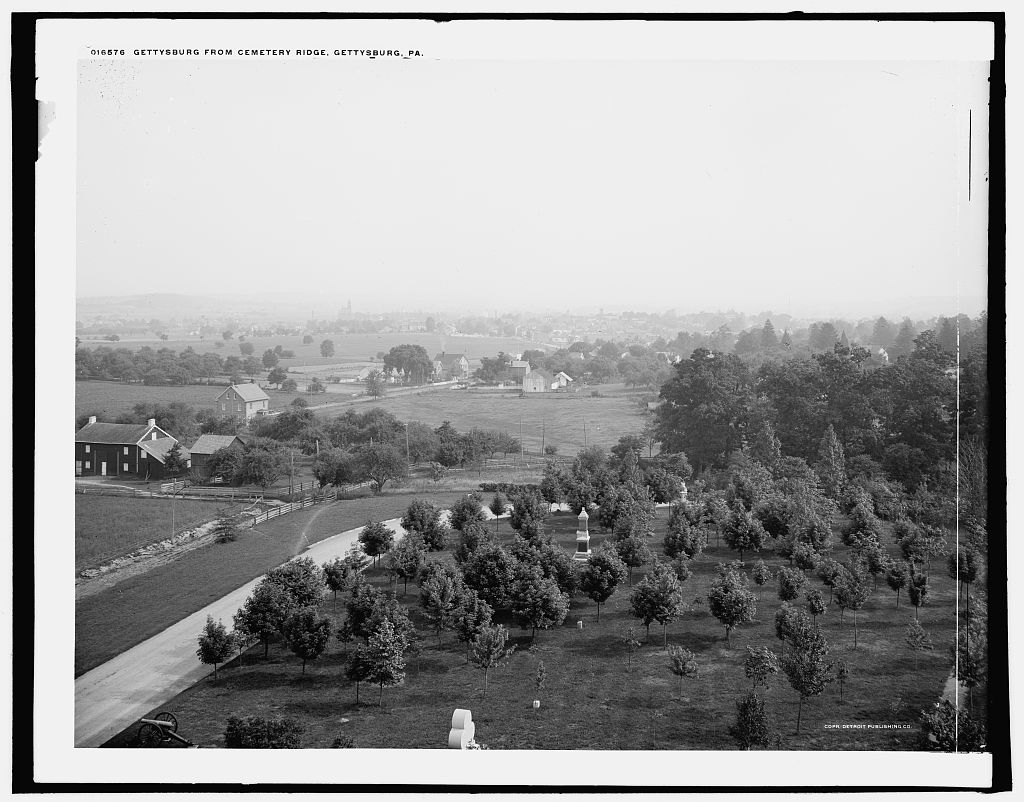
Abraham Brian’s Family
Born in Maryland in either 1804 or 1807—perhaps to enslaved parents—he shows up in Gettysburg records in 1840. Married three times, his first wife (Harriet) died in 1847; his second wife (Catherine) died in 1850; and his third wife (Elizabeth) outlived him, dying in 1892. There is a story that slave catchers kidnapped his second wife in 1845 with her returning to Gettysburg later on. If this is true—and it comes from the amazing Tim Smith of the Adams County Historical Society—maybe Catherine was abducted, returning before their marriage.
Reports vary as to the number of children in the home. Some say two— Francis and William—while others mention five. In 1840, when he first came to Gettysburg, he may have had five children with him and also been supporting a parent.
Abraham Brian’s Property
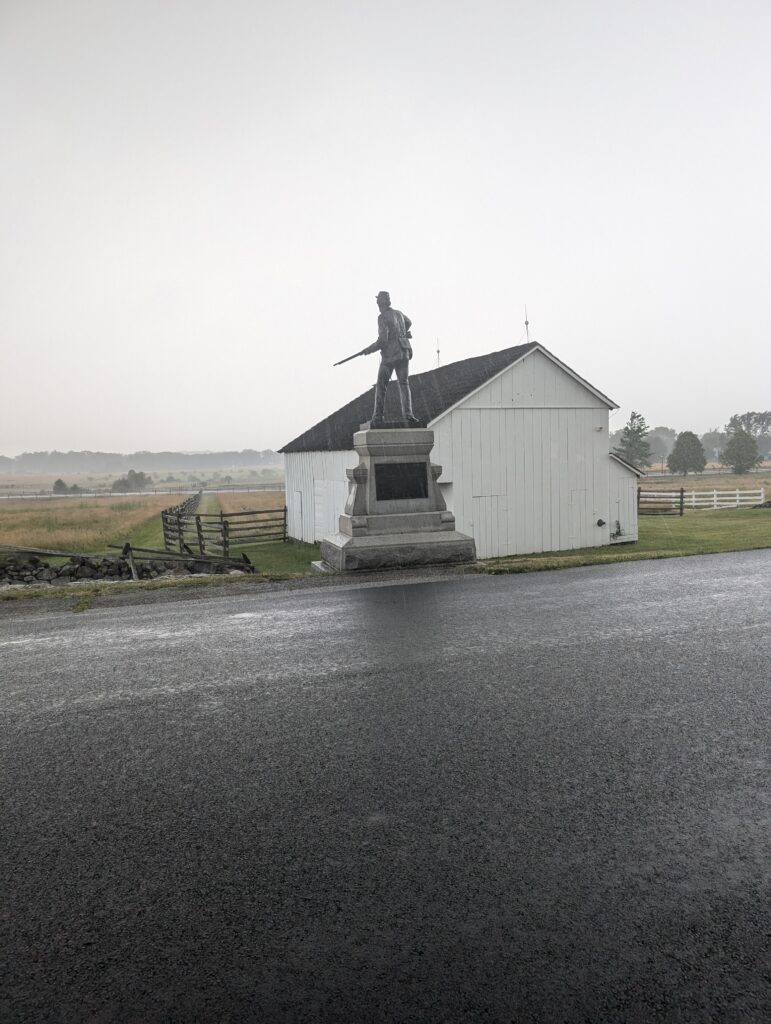
Brian’s property rested on the edge of a 2.5-acre oak grove, Ziegler’s Grove, and two homes and a barn existed on his land—one home apparently rented out. He usually kept one or two horses, a couple of cows, and pigs and mules in his barn; apple and peach trees in his orchard; and wheat, barley, corn, oats, and hay in his fields. One of about two hundred Black residents of Gettysburg at the time, he served as an example of one of the more successful ones.
As for the house that he and his family lived in, it was a 320-square-foot, two-room farmhouse with a small second story. The outside: wide, whitewashed, wooden planks with a stone foundation and a storm cellar door. On the front, you can see two twelve-pane windows. Inside, there’s a 13 x 14 kitchen and a 14 x 11 bedroom. Perhaps a storage area or a space for children to sleep in existed in a partial second floor. To give context about its size, the average apartment size in the United States in 2023: 882 square feet.
Mason Dixon Line
Although Brian and Gettysburg’s other Black residents lived outside the confines of slavery, Gettysburg is located only a handful of miles from the Mason Dixon line that separated free states from ones where slavery was legal: ExplorePAHistory.com lists it as seven miles. So, Black people in Gettysburg knew all too well how easy it would be for slave catchers to abduct them and take them south into slavery, living so closely to the institution’s horrors.
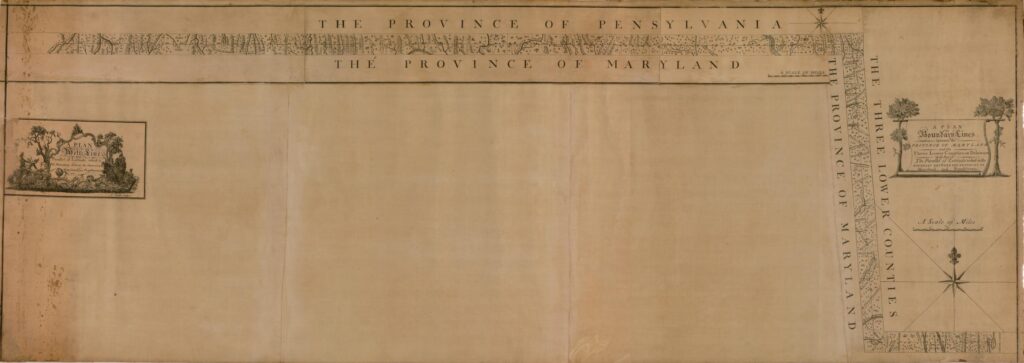
Abraham Brian: Seeking Protection
When news about the approaching Rebels reached the ears of Black residents, they understandably fled although we don’t definitively know where they, including Brian and his family, went for the duration of the battle. They may have headed to Lancaster County to the east of Gettysburg’s Adams County. After they did, the only Black people in town were “camp slaves” brought by the Confederates to cook, clean after, and otherwise care for the people with whom they were forcibly bonded.
In the Heart of the Gettysburg Battle
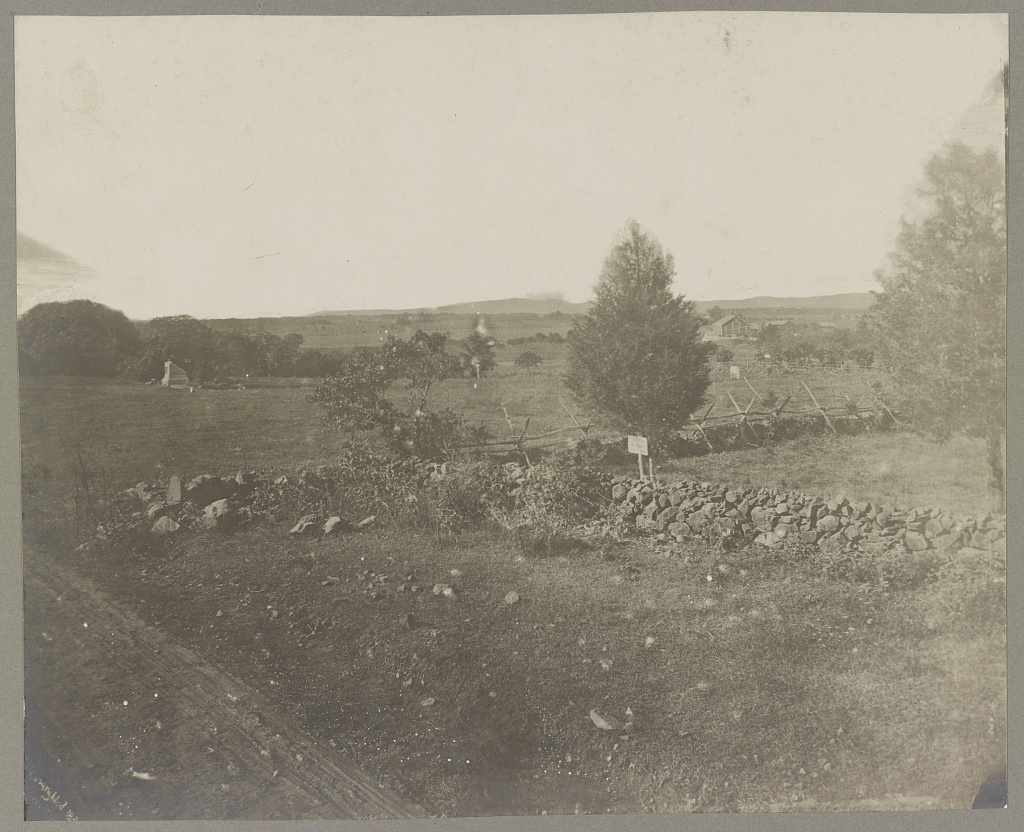
As a huge simplification, in Pickett’s Charge, Confederates positioned themselves on Seminary Ridge about a mile from Cemetery Ridge where Union soldiers lined up, being separated by an undulating field and fencing. On our Gettysburg visit during the 2024 anniversary, I noticed that rangers no longer called the Union position a “line.” Instead, they described it as a three-sided box with Cemetery Ridge—the traditional placement—serving as the long line of the box. On the two sides of the Union line, shorter ones formed, including one that went along Brian’s property towards Seminary Ridge, causing those men to be closer to the Confederates. One of the units creating that line was the 8th OVI where the soldier I’m profiling, Wells Waite Miller, fought.
First, Confederates pummeled the area with cannon fire for an hour or two with the Union responding. Brian’s farm surely suffered much of its damage from this cannonade. Then, along the side of the box where Brian’s farm lay, men fighting under Confederate Major General James Johnson Pettigrew and Confederate Major General Isaac Trimble marched towards the Union line by Brian’s farm where even more fighting occurred.
Abraham Brian and the High Water-Mark Irony
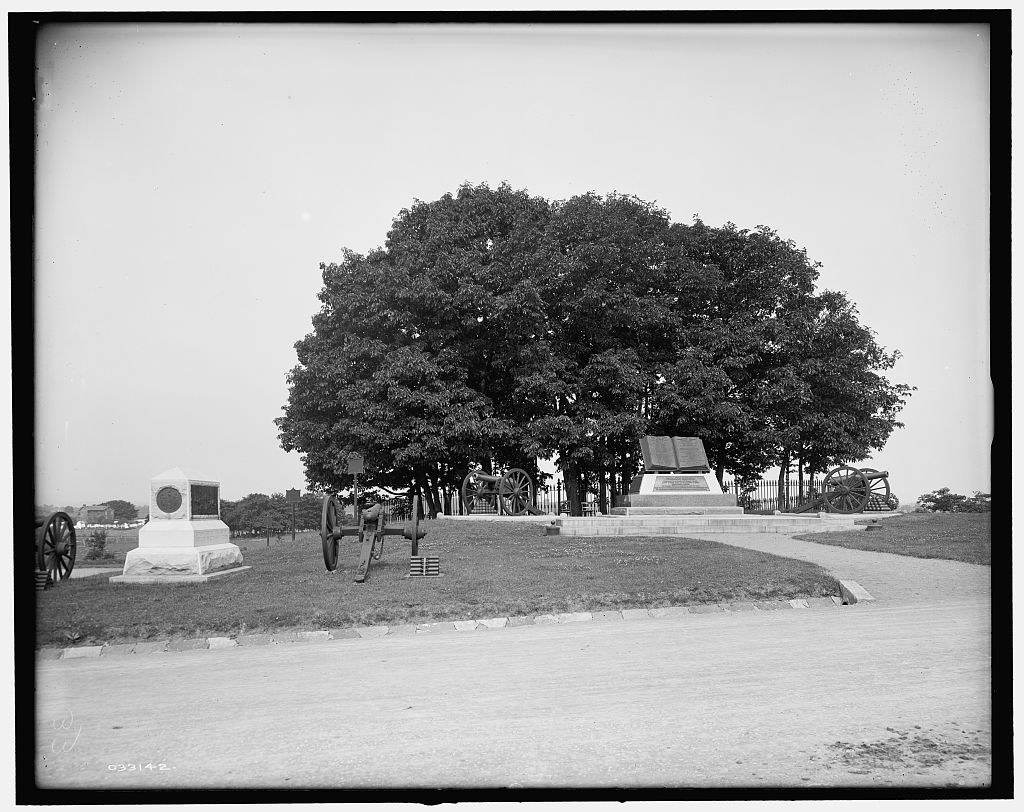
Damage to the Brian Property
After the battle ended, the Brian family came back to deep destruction of their property—the home perhaps having been used as Union General Alexander Hays’s headquarters for a period of time.
Brian’s home was full of bullet holes with smashed windows and furniture thrown outside the house. Union soldiers ate his vegetables; soldiers on both sides trampled his crops—corn, oats, and wheat; and his orchard was destroyed.
The barn was severely damaged, and his outdoor oven was gone. His property served as a temporary graveyard with more than one hundred men buried on his land, and his farm animals were gone. His post and rail fencing? One hundred and ninety-four panels were gone. His stone fence? Torn down and used by soldiers to build defensive positions.
Picking Up the Pieces
After the battle, Brian repaired his house, built new fences, and reburied bodies in their final resting places for $1 apiece. At some point, he applied to the federal government for $1,028 in damage reimbursements although he must have received help with filling out the paperwork since he was illiterate. He was given $15 from the quartermaster for 1.5 tons of hay taken from his barn to feed federal horses. That’s it. That’s all.
Mentions of his land appear in scattered military reports, post-battle, and either Matthew Brady or one of his staff members took a couple of photos of his home.
Abraham Brian’s Final Years
In the late 1860s, Brian—already in his sixties—sold his home, moving to the town of Gettysburg where he worked as a hosteler in a hotel. He may have sold his farm to a widow, Lydia Leister, whose land adjoined his although that’s not been confirmed. Union General George Meade used the Leister farm as his headquarters during the battle.
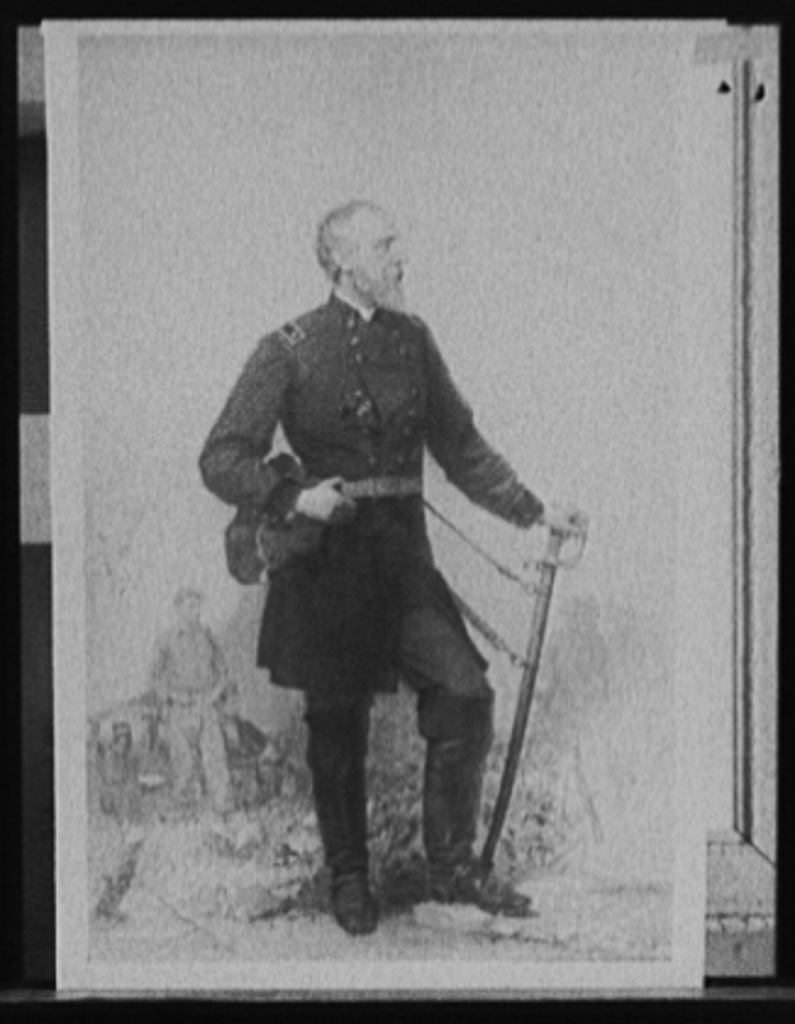
You can find plenty of specifics about his property in a June 1972 report by the Gettysburg Military National Park, The Brien Farm and Family, created when another round of restorations of his home were imminent.
Three More Things
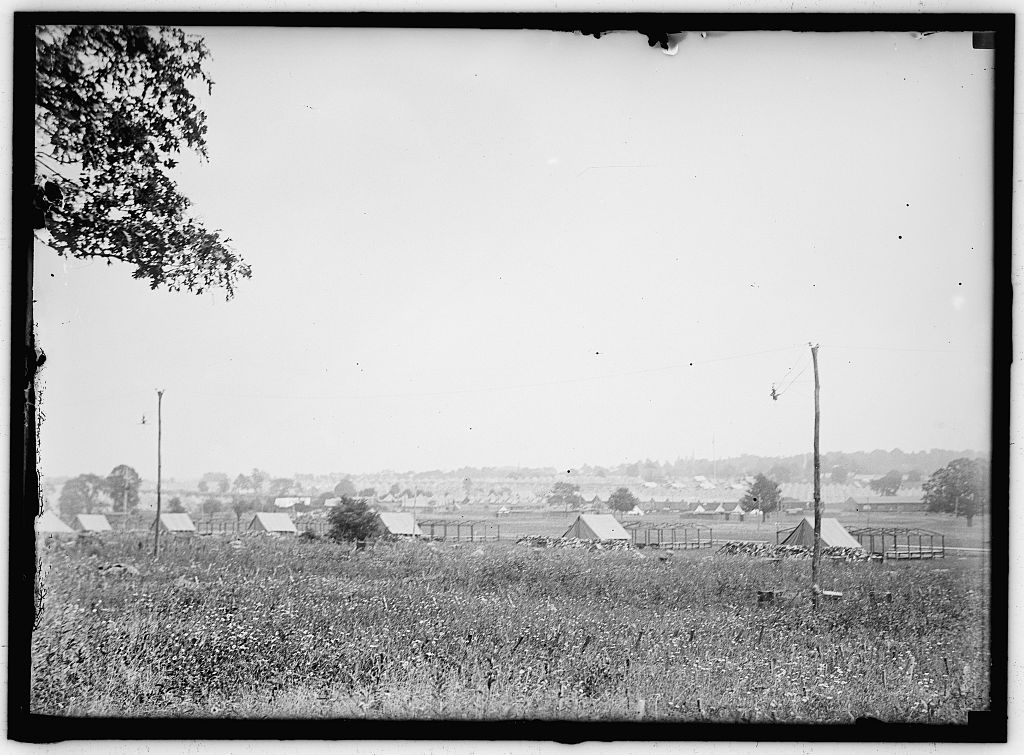
First, Wells Waite Miller certainly traversed the Brian property on the day he nearly died. The 8th OVI helped to form one of the two short lines on the Union’s three-sided box during Pickett’s Charge.
Second, in another incredible irony, in the iconic 1938 photo in which Union and Confederate soldiers shake hands over a fence, the house and barn in the background belonged to the Brian family—a free Black family—during the battle.
Finally, in an intriguing possibility, historian and author Kevin Levin asks us to look at the North Carolina monument on Confederate Avenue where one of the soldiers poignantly points across the field where they marched during Pickett’s Charge. Levin suggests that the soldier is pointing directly at the Abraham Brian farm. Food for thought! I wish I’d read this post before we went on our recent trip to Gettysburg but, for us, this exercise will need to wait until our next visit. Maybe you’ll be there before we will. If so, let me know what you think!
Wells Waite Miller: Exploration of His Life and Times
I’d like to share my research about Wells Waite Miller from Castalia, Ohio with you. Although I’ve written the material in the order in which I’ve found research material, I now roughly have the posts in the order in which the events occurred.
Blog posts I’ve written on the subject so far include:
- Wells Waite Miller’s America
- Thomas Miller: Ancestors in England
- Great Puritan Migration
- Scandal in the Colonies
- Calm in the Eye of the Storm
- Aaron Miller: Born Under the Drumbeats of War
- Grandparents, Parents, and Siblings
- Enfield, New York
- Ohio Bound
- Oberlin Years: Fierce Debates About Abolitionism
- Enlisting in the Civil War
- A Look at Lodowick G. Miller (current post)
- Captured: Camp Parole
- Marching Towards Gettysburg
- Picketts Charge and 43 Bonus Years
- Glory Days to Invalid Corps
- Castalia Massacre
- Calvin Caswell
- Calvin Caswell, Continued
- Obed Caswell And Walter Caswell: Story of Brothers
- Miller Family Mystery Solved?
- Miller Family Mystery Solved, Part Two
- Amos and Corinne Miller
- Oscar Schultz Kriebel, Part One
- Oscar Schultz Kriebel, Part Two
- Oscar Schultz Kriebel, Part Three
- Oscar Schultz Kriebel, Part Four
- Erie County, Ohio for Congress
- Wells Waite Miller: Republic Candidate for Ohio Governor
- Ohio Antietam Battlefield Commission
- “Speaking the Names: A Tale of Two Brothers” at Ashland University’s Black Fork Review
I invite you to become part of this journey, sharing my posts with people who enjoy reading historical biographies.
If you read this material and have additional information that’s directly tied to Miller or sets context about his life—or you’ve spotted errors—please email me at kbsagert@aol.com.